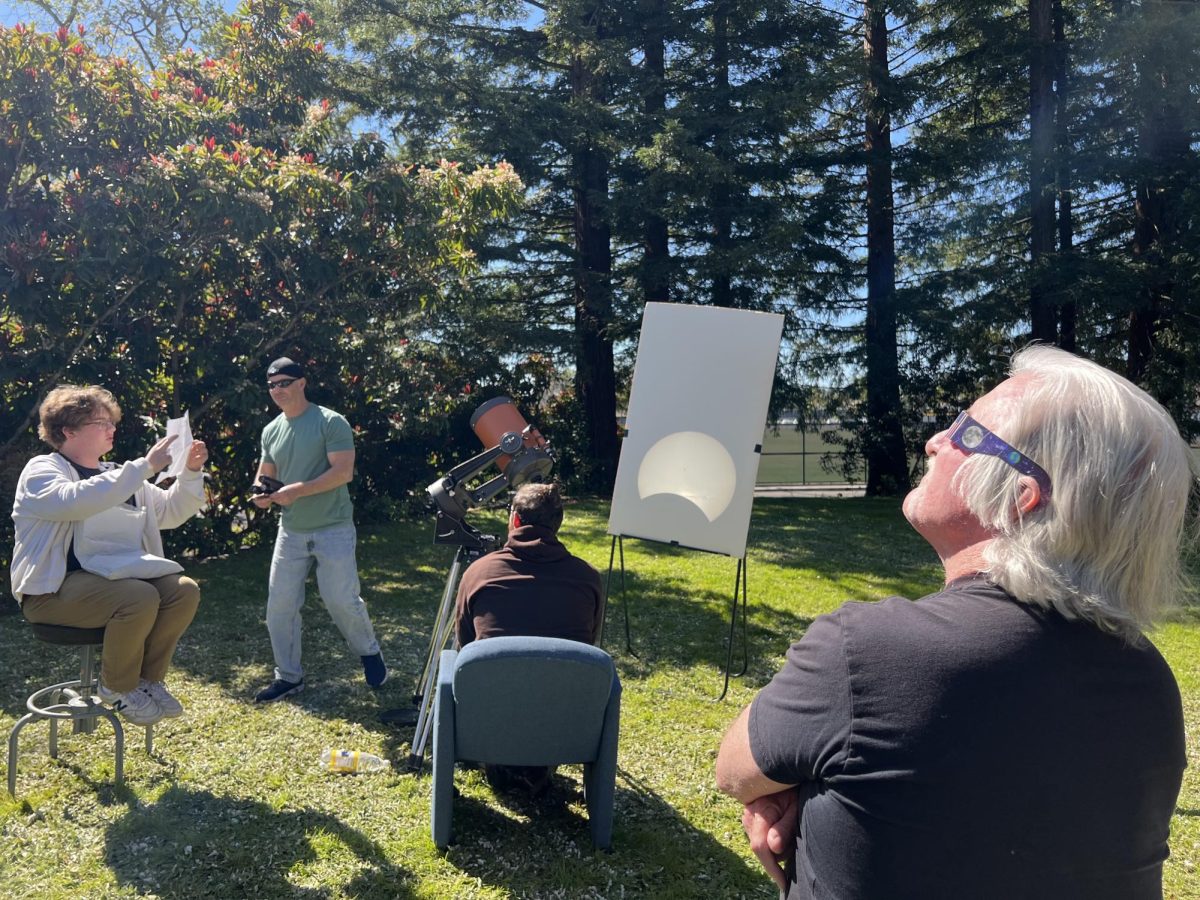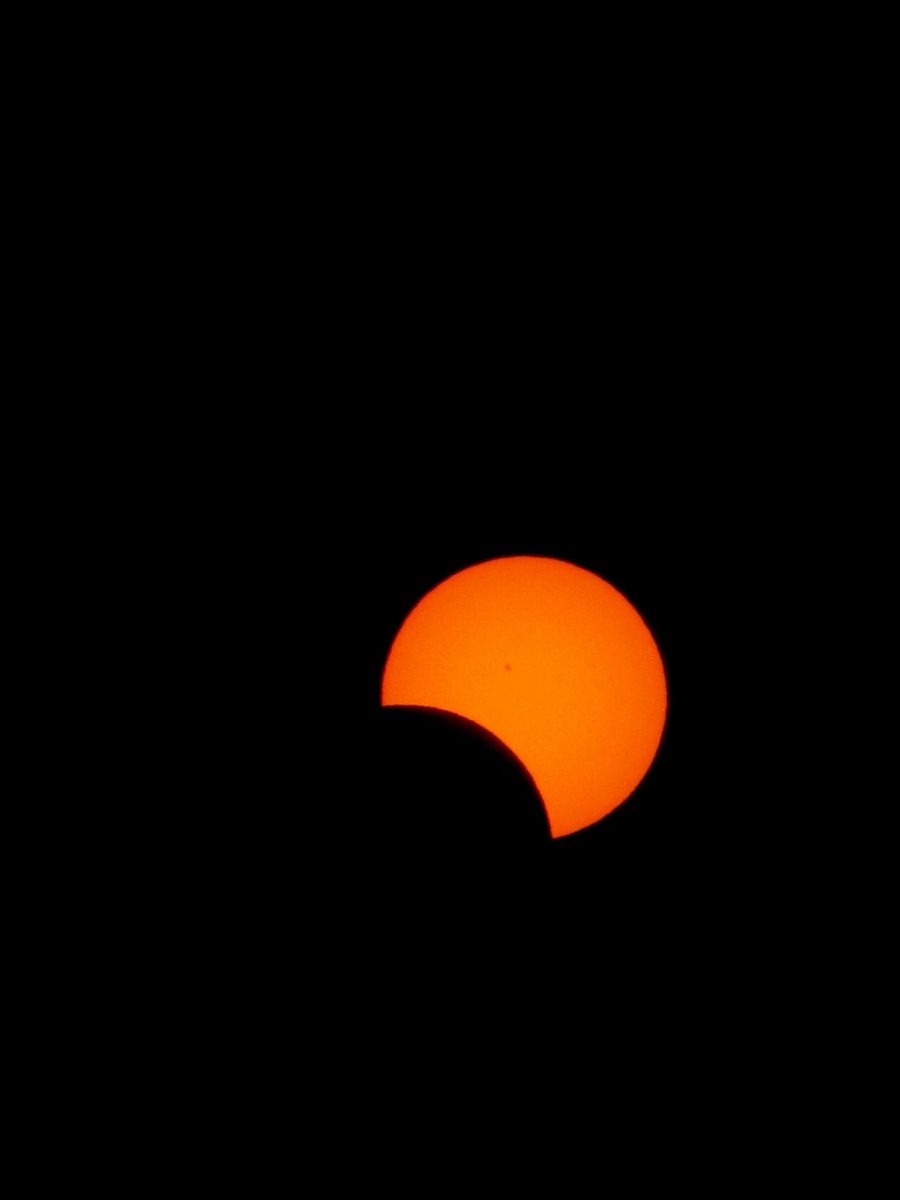A total solar eclipse basked America in its glory on Monday, April 8. At Santa Rosa Junior College’s Santa Rosa campus, astronomy instructors Keith Waxman and Laura Sparks hosted a viewing on the Lark Hall lawn with free eclipse glasses for students to witness the 32.4% coverage provided by Earth’s moon.
During a solar eclipse, the moon passes in between the sun and the Earth, blocking some of the sun’s light from reaching the planet’s surface. Solar eclipses happen at least twice a year during a new moon. This is because the sun and moon are on the same side of the earth, meaning the moon is invisible at night, but during the day it has the opportunity to eclipse the sun. Because the moon’s orbit is slightly askew, it doesn’t always create an eclipse, and it rarely creates a total eclipse. The next one in the United States won’t occur until Aug. 22, 2044.
Lunar eclipses, on the other hand, are much easier to view. A total lunar eclipse will occur on average once or twice a year according to the National Weather Service. These kinds of eclipses only occur during a full moon, when the Earth blocks the light of the sun from reaching the moon. The red moon we see during this time is due to reddish sunlight reaching the moon through Earth’s shadow.
Waxman, who has been in the path of totality four times in his life, struggled to find words to describe the experience, saying, “My dad [former SRJC Astronomy professor and author of the book “Astronomical Tidbits,” Gerald Waxman] said it’s like trying to describe a piece of chocolate Bavarian pie to someone who’s never tasted the pie. Unless you’ve had the pie you can’t describe the taste of it or the feel, and what you see or experience may be different from what somebody else experiences.” He also said, “You have to see a total.”
During the eclipse people report feeling anxious, the temperature drops by 15 degrees and the winds get faster.
Sparks, who serves as mayor of Cotati when she’s not teaching, said she thinks viewing the eclipse is important because, “It helps us to think about the world beyond just ourselves and realize that we’re a part of something much bigger.” She’s only experienced totality once, in Salem, Oregon, in 2017. Regarding her experience, she said, “As soon as totality began my hands and my legs started shaking and I had to sit down” and “Even though I knew exactly what to expect, it affected me really deeply.”
For those who missed this eclipse, fret not. More partial eclipses are due soon, according to NASA, with the next one visible from North America on Oct. 2. Following that, another partial eclipse will be visible in March of 2025.
For now, please enjoy this gallery of photos submitted by members of the Oak Leaf staff and the community. Please email photos you would like to share to [email protected] for inclusion in our gallery.





